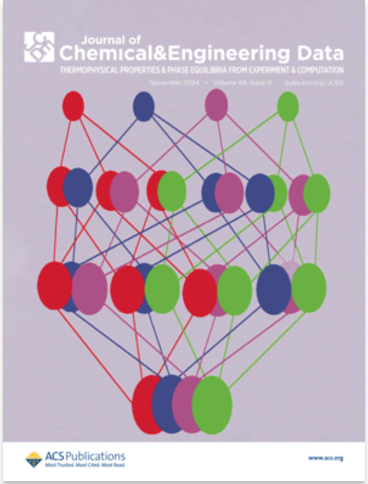增强子泽斯特同源体 2 (EZH2) 过度表达与 BRAFV600E 基因突变同时存在可预测朗格汉斯细胞组织细胞增生症(LCH)患者的不良预后:一项试点研究。
IF 2.1
3区 工程技术
Q3 CHEMISTRY, MULTIDISCIPLINARY
Journal of Chemical & Engineering Data
Pub Date : 2024-06-01
DOI:10.1200/jco.2024.42.16_suppl.e18536
引用次数: 0
摘要
e18536 背景:先前的研究表明,组织细胞和树突状细胞肿瘤中的EZH2蛋白表达和p-ERK1/2级联信号传导上调。BRAFV600E是LCH患者中最常见的驱动基因突变(34-64%)。在黑色素瘤研究中,BRAFV600E 激活突变的信号通路导致 EZH2 上调。在LCH患者中,EZH2与BRAFV600E共同表达的频率尚不清楚。鉴于组织细胞疾病患者停用 BRAF 抑制剂治疗后的持久反应有限,我们研究了 EZH2 过表达和 BRAFV600E 突变在 LCH 中的预后作用。研究方法我们分析了2010-2022年间在莫菲特癌症中心和坦帕综合医院确诊的27例LCH患者(pts)。我们使用针对 EZH2(D2C9 克隆,Cell Signaling 公司)和 BRAFV600E(VE1 克隆,Ventana medical systems 公司)的抗体进行了免疫组化染色。通过染色强度(0、1+、2+ 和 3+)乘以阳性细胞百分比(H 评分)的 IHC 评分来评估表达情况。H评分≥30分为阳性。进行热测序以检测 BRAFV600E 突变,并与 VE1 染色结果相关联。鉴于通过 IHC 进行的黑色素瘤研究中突变代表性很强,因此 IHC 或 PCR 的阳性结果均被视为突变阳性的标志。结果根据同时存在EZH2过表达和BRAFV600E突变(EZH2/BRAFV600E)的病例与不存在EZH2过表达和BRAFV600E突变的病例进行分组。在27例患者中,25.9%(n=7)同时存在EZH2/BRAFV600E突变。EZH2/BRAFV600E组与对照组在年龄上存在差异(P=0.046)。37.03%的患者(10人)发现了BRAFV600E突变,40.7%的患者(11人)通过IHC研究发现了VE1的表达。4例患者的PCR和IHC检测结果不一致,可能是由于组织样本有限。分别有 63% 和 48.1% 的患者 EZH2 和 BRAFV600E 阳性。6名患者接受了观察,8名患者接受了有或无放疗的手术,12名患者接受了诱导化疗,只有1名患者接受了BRAF抑制剂治疗。经过 18.6 个月的中位随访,92.6% 的患者存活。一线治疗的总体反应率(ORR)为 55.6%。在OS的单变量分析中,H评分和BRAFV600E突变有导致OS恶化的趋势,但由于样本量较小,并不具有统计学意义。然而,BRAFV600E突变和EZH2过度表达表明总生存期(OS)较差(P=0.012)。结论我们的研究表明,同时存在BRAFV600E突变和EZH2过度表达与LCH患者的不良OS相关。我们推测,在一部分 LCH 患者中,同时针对 EZH2 和 BRAFV600E 的联合疗法可能会改善 ORR 或克服对 BRAF 抑制剂单药治疗的耐药性。不过,我们的试点研究结果还需要在更大的样本集上进行验证。本文章由计算机程序翻译,如有差异,请以英文原文为准。
Concurrent enhancer of Zeste homolog 2 (EZH2) over-expression with BRAFV600E mutation predicts a poor outcome in patients with Langerhans cell histiocytosis (LCH): A pilot study.
e18536 Background: Prior studies demonstrated upregulated EZH2 protein expression and p-ERK1/2 cascade signaling in histiocytic and dendritic cell neoplasms. BRAFV600E is the most common driver mutation reported in LCH patients (34-64%). In melanoma studies, a signaling pathway with BRAFV600E activating mutation resulted in upregulation of EZH2. The frequency of EZH2 co-expression with BRAFV600E is unknown in LCH. Given the limited durable responses after discontinuation of treatment with BRAF inhibitors in histiocytic disorders, we investigated the prognostic role of EZH2 overexpression and BRAFV600E mutation in LCH. Methods: We analyzed a cohort of 27 consecutive patients (pts) diagnosed with LCH at Moffitt Cancer Center and Tampa General Hospital between 2010-2022. Immunohistochemical (IHC) staining using antibodies against EZH2 (D2C9 clone, Cell Signaling) and BRAFV600E (VE1 clone, Ventana medical systems) were performed. Expression was assessed by an IHC score of stain intensity (0, 1+, 2+ and 3+) multiplied by percent positive cells (H score). H score ≥ 30 was considered as positive. Pyrosequencing was performed to detect BRAFV600E mutations and correlated with VE1 staining results. A positive outcome from either IHC or PCR was deemed indicative of mutation positivity, given the robust presence of mutation representation in melanoma studies through IHC. Results: Entire cohort were grouped for pts who had both EZH2 overexpression and BRAFV600E mutation (EZH2/BRAFV600E) versus those who did not. Out of 27 pts, 25.9% (n=7) had both EZH2/BRAFV600E. EZH2/BRAFV600E group differed from control group by age ( p=0.046). BRAFV600E mutation was identified in 37.03% (10) pts, and 40.7% (11) showed expression of VE1 by IHC study. Discrepancies between PCR and IHC study were observed in 4 pts and potentially attributable to the restricted availability of tissue samples. 63% and 48.1% of pts were positive for EZH2 and BRAFV600E respectively. 6 pts were observed, 8 underwent surgery with or without radiation, 12 received induction chemotherapy, and only 1 received a BRAF inhibitor. After 18.6 months of median follow up, 92.6% pts were alive. Overall response rate (ORR) to the 1st line therapy was 55.6%. In univariate analysis of OS, H score and BRAFV600E mutation trended towards worse OS but were not statistically significant owing to small sample size. However, BRAFV600E mutation and EZH2 over expression demonstrated a poor overall survival (OS) ( p=0.012). Conclusions: Our study indicates that concurrent presence of BRAFV600E mutation and EZH2 overexpression correlates with poor OS in LCH pts. We hypothesize that in a subset of LCH pts combination therapy targeting both EZH2 and BRAFV600E may improve ORR or overcome resistance to BRAF inhibitor monotherapy. However, the results of our pilot study need to be validated on a larger sample set.
求助全文
通过发布文献求助,成功后即可免费获取论文全文。
去求助
来源期刊

Journal of Chemical & Engineering Data
工程技术-工程:化工
CiteScore
5.20
自引率
19.20%
发文量
324
审稿时长
2.2 months
期刊介绍:
The Journal of Chemical & Engineering Data is a monthly journal devoted to the publication of data obtained from both experiment and computation, which are viewed as complementary. It is the only American Chemical Society journal primarily concerned with articles containing data on the phase behavior and the physical, thermodynamic, and transport properties of well-defined materials, including complex mixtures of known compositions. While environmental and biological samples are of interest, their compositions must be known and reproducible. As a result, adsorption on natural product materials does not generally fit within the scope of Journal of Chemical & Engineering Data.
 求助内容:
求助内容: 应助结果提醒方式:
应助结果提醒方式:


